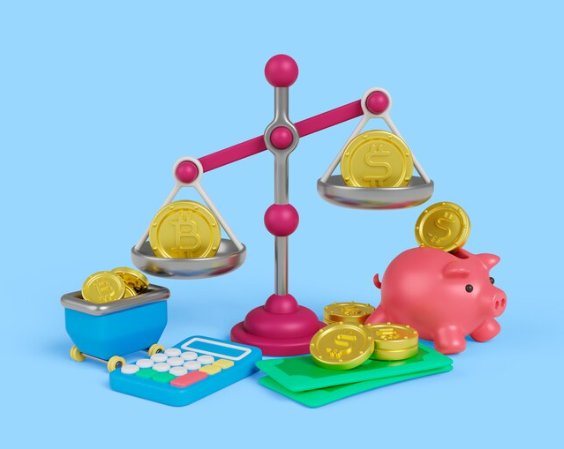Creating a personal budget is essential for achieving financial stability and reaching your financial goals. A well-structured budget helps you manage your income, control your spending, save for future needs, and avoid debt. This guide will provide you with practical tips and tools to create a personal budget that works for you.
Table of Contents
Why You Need a Personal Budget
- Financial Control: A budget gives you a clear picture of your income and expenses, allowing you to make informed financial decisions.
- Goal Achievement: Whether saving for a vacation, a home, or retirement, a budget helps you allocate funds towards your goals systematically.
- Debt Management: By tracking your spending, you can identify areas where you can cut back and allocate more money toward paying off debts.
- Emergency Preparedness: A budget allows you to set aside funds for unexpected expenses, ensuring you’re prepared for emergencies.
Steps to Create a Personal Budget
Step 1: Assess Your Current Financial Situation
Begin by evaluating your current financial standing:
- Gather Financial Statements: Collect bank statements, pay stubs, bills, and any other relevant documents.
- Calculate Your Net Worth: Subtract your total liabilities (debts) from your total assets (savings, investments) to understand your overall financial health.
Step 2: Track Your Income
Identify all sources of income:
- Salary/Wages: Include regular earnings from your job.
- Side Income: Account for any freelance work or part-time jobs.
- Other Income: Include bonuses, gifts, or any passive income streams.
Step 3: Track Your Expenses
Categorize your expenses into fixed and variable costs:
- Fixed Expenses: These are consistent monthly costs such as rent/mortgage, utilities, insurance premiums, and loan payments.
- Variable Expenses: These include groceries, entertainment, dining out, and other discretionary spending.
Use budgeting tools or apps to help track these expenses effectively.
Step 4: Separate Needs from Wants
After tracking expenses, categorize them into needs (essential expenses) and wants (discretionary spending):
- Needs: Rent/mortgage, groceries, transportation.
- Wants: Dining out, entertainment subscriptions, luxury items.
This separation helps prioritize essential spending while identifying areas where you can cut back.
Step 5: Choose a Budgeting Method
Select a budgeting method that suits your lifestyle. Here are some popular options:
- 50/30/20 Rule: Allocate 50% of your income to needs, 30% to wants, and 20% to savings or debt repayment.
- Zero-Based Budgeting: Every dollar of income is assigned a specific purpose until there’s no money left unallocated. This method encourages intentional spending.
- Envelope System: Use cash envelopes for different categories of spending (e.g., groceries, entertainment). Once the envelope is empty, no more spending in that category is allowed.
Step 6: Set Financial Goals
Establish short-term and long-term financial goals:
- Short-Term Goals: Saving for a vacation or paying off credit card debt.
- Long-Term Goals: Building an emergency fund or saving for retirement.
Having clear goals will motivate you to stick to your budget.
Step 7: Create Your Budget
Now that you’ve gathered all the necessary information:
- List Your Income Sources.
- Detail Your Fixed and Variable Expenses.
- Allocate Funds According to Your Chosen Budgeting Method.
- Ensure Total Income Equals Total Expenses (or leaves room for savings).
Step 8: Monitor and Adjust Regularly
A budget is not static; it requires regular monitoring:
- Monthly Reviews: Compare actual spending against your budgeted amounts each month.
- Adjust as Necessary: If you overspend in one category, find ways to cut back in others or adjust future budgets accordingly.
Common Budgeting Mistakes to Avoid
- Being Unrealistic: Setting overly ambitious goals can lead to frustration. Be realistic about your spending habits and adjust expectations accordingly.
- Neglecting Emergency Savings: Failing to allocate funds for emergencies can lead to financial stress when unexpected expenses arise.
- Ignoring Small Expenses: Small purchases can add up quickly. Track all expenses diligently to gain an accurate picture of your spending habits.
- Not Reviewing Regularly: A budget requires ongoing attention. Regular reviews ensure it remains relevant as life circumstances change.
- Failing to Celebrate Milestones: Recognize achievements along the way—whether it’s paying off debt or reaching savings goals—to maintain motivation.
Tools and Apps for Effective Budgeting
Using budgeting tools can simplify the process significantly. Here are some popular options:
- YNAB (You Need A Budget): This app encourages proactive budgeting by helping users allocate every dollar they earn towards specific categories.
- Mint: A free budgeting tool that tracks expenses automatically by linking bank accounts; it provides insights into spending habits.
- EveryDollar: A straightforward app that allows users to create zero-based budgets easily; it offers both free and premium versions.
- PocketGuard: This app shows how much disposable income you have left after accounting for bills and savings goals.
- Rocket Money (formerly TrueBill): This app helps track subscriptions and offers bill negotiation features alongside budgeting tools.
Conclusion
Creating a personal budget is an essential step toward achieving financial stability and reaching your financial goals. By following the outlined steps—assessing your finances, tracking income and expenses, selecting an appropriate budgeting method, setting goals, and monitoring progress—you can develop a budget that works effectively for you.
For more detailed insights on budgeting strategies and tools available today, check out resources like Investopedia.
Frequently Asked Questions (FAQ)
1. How often should I review my budget?
It’s recommended to review your budget monthly or quarterly to ensure it reflects any changes in income or expenses accurately.
2. What if I go over my budget in one category?
If you exceed your budget in one category, look for areas where you can cut back in other categories or adjust future budgets accordingly.
3. Can I use multiple budgeting methods simultaneously?
Yes! You can combine different methods that work best for various aspects of your finances—for example, using zero-based budgeting for fixed expenses while applying the envelope system for discretionary spending.
4. Is it necessary to use budgeting apps?
While budgeting apps can simplify the process by automating tracking and providing insights into spending habits, they are not mandatory. You can also use spreadsheets or pen-and-paper methods if that suits you better.
5. How do I stay motivated while sticking to my budget?
Establish clear financial goals and celebrate milestones along the way! Recognizing achievements—no matter how small—can help maintain motivation throughout the budgeting process.






